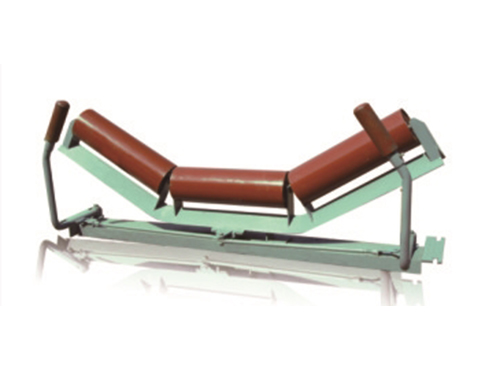
conveyor
Description: Conveyors can be divided into three types according to their operation modes: integrated conveyor, belt conveyor, screw conveyor, bucket elevator, drum conveyor, plate chain conveyo...
Click: 163

Conveyors can be divided into three types according to their operation modes: integrated conveyor, belt conveyor, screw conveyor, bucket elevator, drum conveyor, plate chain conveyor, mesh belt conveyor, and chain conveyor
Main features:
The direction is easy to change, and the conveying direction can be flexibly changed. When it is large, it can reach 180 degrees.
The conveyor is composed of 8 rollers per unit, and each unit can be used independently or connected by multiple units, making installation convenient The conveyor can stretch and retract freely, and the ratio of the longest to shortest state of a unit can reach three timesOn site application methods of conveyor
First, explain the composition of the belt conveyor system: Belt conveyor is an important equipment for conveying and loading and unloading loose materials, which can be widely used in industrial industries such as mining, metallurgy, building materials, chemical, power, food processing, etc. In coal mines, metal mines, steel enterprises, ports, cement plants, and other places, a large number of applications of leather conveyors can be seen. Transport machinery can not only complete the transportation of loose materials, but also transport finished materials. However, depending on the location of use, working environment, and type of conveying materials, there will be significant differences in their design and application.
Modern conveyor systems have high requirements for dust prevention. Therefore, sprinkler and dust collection devices are installed at each transition point, and wind shields or windshields are installed along the belt conveyor. The system is composed of a single machine. For operators and repairers working in the entire system, they need to base themselves on the single machine they are responsible for and understand the interconnection between systems. The single machine is also composed of many components. Only by doing a good job in daily maintenance and upkeep of each component, can the safe operation of the equipment be confirmedWe generally meet various forms of work conditions based on the different usage locations, working environments, technical performance, and types of materials conveyed by belt conveyors. In addition to commonly used general belt conveyors, there are also various new types of special belt conveyors with new structures. Representative ones include: high angle belt conveyors, deep groove belt conveyors, and pressure belt conveyors, tubular belt conveyors, air cushion belt conveyors, flat turning belt conveyors, line friction conveyors, and corrugated edge conveyor belt conveyors. There can be multiple classification methods, including general mobile conveyors, underground selection conveyors, and fixed conveyors for open-pit mining.
Classified by purpose, there are general mobile conveyors, underground selection conveyors, and fixed conveyors for open-pit mining.
Type, special structure type, movable conveyor, loader one-on-one transfer function type, large inclination angle conveyor, etc. Generally, short distance in plant conveyors can complete horizontal, upward or downward transportation. Reversible patterned belt conveyors can be used for bidirectional material transportation. Cantilever conveyors are usually installed on stackers and can rotate to achieve the function of soil or fabric removal, Elevated cranes supported by gantry cranes are usually used in conjunction with other bulk material handling equipment, such as in applications such as hydropower construction, where a standard intermediate frame can be configured, which is set on the sleepers for easy relocation Classified by the category of transported materials, there are belt conveyors for general loose materials, hard materials, and single piece materials. Classified by the position of the rubber conveyor belt bearing section, there are three types of bidirectional conveyors: belt bearing section on top, bearing section on bottom, and simultaneously bearing section on top and bottom. The use of bidirectional conveyors can transport materials separately in the upper and lower branches, but in order to maintain the material contact surface unchanged, the rubber belt needs to be regularly flipped





 Current location:
Current location:

